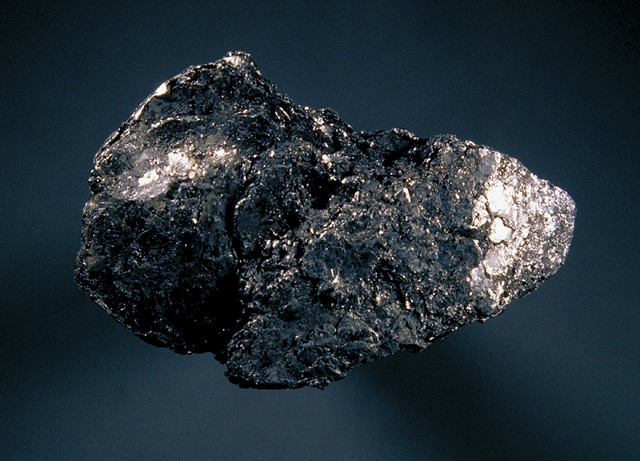
by U.S. Geological Survey Wednesday, June 20, 2018
Donald W. Olson, mineral commodity specialist for the U.S. Geological Survey, compiled the following information on graphite, which is desirable for many industrial applications.

Graphite is one of four forms of pure crystalline carbon. Credit: © Dr. Richard Busch, ESW Image Bank
Graphite, a grayish black opaque mineral with a metallic luster, is one of four forms of pure crystalline carbon (the others are carbon nanotubes, diamonds and fullerenes). It is one of the softest minerals and it exhibits perfect basal (one-plane) cleavage. Graphite is the most electrically and thermally conductive of the nonmetals, and it is chemically inert.
Perhaps best known as “pencil lead,” graphite has many industrial applications, ranging from use in batteries; brake linings; carbon products, such as bearings and brushes, crucibles, nozzles, retorts, stoppers and sleeves; to foundries; lubricants; powdered metals; refractories; rubber; steelmaking; and of course, pencils.
Graphite occurs naturally in metamorphic rocks or at the contact between an igneous intrusion and a carbonaceous body. Natural graphite deposits occur as lenses or layers of disseminated or massive flakes. What form the deposits take depends on the geologic background. One type called amorphous graphite, for example, is formed by the thermal metamorphism of coal.
China has the largest reserves in the world, distantly followed by Mexico, the Czech Republic, Madagascar and India. Several other countries, including Canada, Germany, Sri Lanka and North Korea, also produce graphite. Natural graphite is mined from open pit and underground mine operations. Madagascar mines are mostly open pit, whereas Mexican, North Korean and Sri Lankan mines are predominantly underground. The United States does not produce any natural graphite.
The estimated world’s reserve of graphite exceeds 800 million tons — a more than adequate supply. Nonetheless, synthetic graphite, recycled graphite scrap and calcined petroleum coke compete as alternatives to natural graphite for most uses, especially in steel production.
Advances in thermal technology and acid-leaching techniques that enable the production of higher purity graphite powders are likely to lead to development of new applications for graphite in high-tech fields. Such innovative refining techniques have allowed the use of improved graphite in carbon-graphite composites, electronics, foils, friction materials and special lubricant applications. Flexible graphite product lines, such as graphoil (a thin graphite cloth), will probably be the fastest-growing market. Large-scale fuel-cell applications are being developed that could consume as much graphite as all other uses combined.
For more information on graphite and other mineral resources, visit minerals.usgs.gov/minerals.
© 2008-2021. All rights reserved. Any copying, redistribution or retransmission of any of the contents of this service without the expressed written permission of the American Geosciences Institute is expressly prohibited. Click here for all copyright requests.